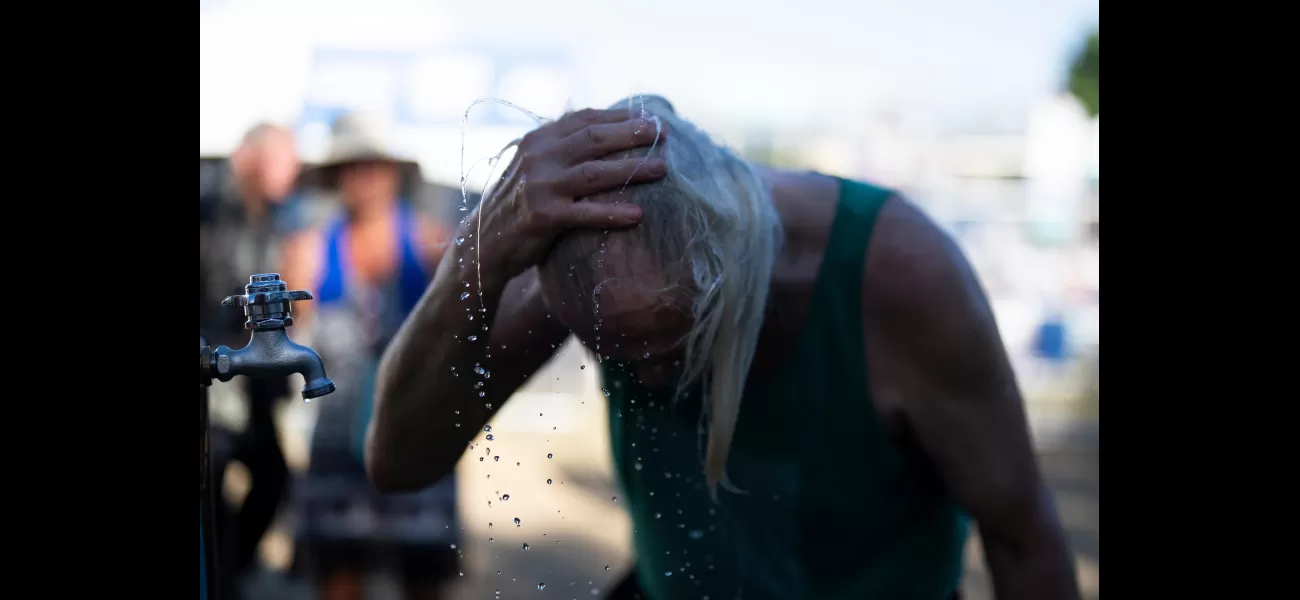Extreme heat wave putting 130 million Americans at risk of breaking records.
"About 130 million people are at risk from a record-breaking heatwave that is expected to continue from the East Coast to the West Coast."
July 6th 2024.

As temperatures soared to dangerously high levels, forecasters warned that roughly 130 million people were at risk from a heat wave sweeping across the country. This long-running heat wave had already shattered records and was expected to break even more from the West Coast to the East Coast.
According to Jacob Asherman, a meteorologist with the National Weather Service, the combination of heat and humidity could push temperatures above 100 degrees Fahrenheit in parts of the Pacific Northwest, Mid-Atlantic, and Northeast regions. Cities like Eugene, Portland, and Salem in Oregon could see record-breaking temperatures. And it wasn't just the West Coast that was affected; dozens of other records across the country were expected to fall, prompting millions to seek relief in cooling centers.
"This is definitely an unusual event that we're expecting," Asherman said. "And unfortunately, it looks like it will continue through at least midweek."
The Southwest was already feeling the brunt of this heat wave, with Phoenix, Arizona reaching a scorching 98 degrees by 9 a.m. on Saturday. And this was after the city had a record high of 118 degrees on Friday. Meteorologists predicted that temperatures would remain near daily records for the entire week, with the lower desert areas reaching a sweltering 115 to 120 degrees. This rare heat even extended to higher elevations, including around Lake Tahoe, where the National Weather Service warned of "major heat risk impacts, even in the mountains."
The forecast for California's Death Valley was even more extreme. On Friday, the temperature reached a new record of 127 degrees, beating the previous record of 122 degrees set in 2013. And it was only expected to get hotter, with temperatures reaching 129 degrees on Sunday and hovering around 130 degrees for the rest of the week. The hottest temperature ever recorded on Earth was 134 degrees in Death Valley in 1913, though some experts argue that the true record was 130 degrees recorded just last month.
But the heat wave wasn't just confined to the West. The Eastern U.S. was also preparing for high temperatures, with parts of Maryland under an excessive heat warning. In Baltimore, heat index values were expected to reach 110 degrees. The National Weather Service advised people to stay hydrated, avoid the sun, and check on their neighbors and relatives, while also warning against leaving young children and pets in hot cars.
Sadly, heat-related deaths had already begun to occur. In Maricopa County, Arizona, which includes Phoenix, there were 13 confirmed heat-related deaths this year, and over 160 other suspected cases were still under investigation. Tragically, a 10-year-old boy passed away earlier this week after suffering a heat-related medical event while hiking with his family in Phoenix.
As the heat wave persisted, people found ways to cope. At the Waterfront Blues Festival in Portland, Oregon, music fans sought refuge from the heat by drinking cold water, finding shade, or cooling off under water misters. The organizers even provided free access to air conditioning at a nearby hotel. Angela Quiroz, a festival-goer, shared that she kept her scarf and hat wet and applied sunscreen to protect herself from the blistering sun. "There's definitely a difference between the shade and the sun," she said. "But when you're in the sun, it feels like you're being cooked."
Associated Press reporters Julie Walker, Rebecca Boone, and Scott Sonner contributed to this story from different locations across the country, highlighting the widespread impact of this heat wave. Other journalists from various cities also contributed to the coverage, including Adrian Sainz in Memphis, Tennessee; Jonathan Drew in Raleigh, North Carolina; John Antczak in Los Angeles; Rio Yamat in Las Vegas; Denise Lavoie in Richmond, Virginia; and Ben Finley in Norfolk, Virginia.
According to Jacob Asherman, a meteorologist with the National Weather Service, the combination of heat and humidity could push temperatures above 100 degrees Fahrenheit in parts of the Pacific Northwest, Mid-Atlantic, and Northeast regions. Cities like Eugene, Portland, and Salem in Oregon could see record-breaking temperatures. And it wasn't just the West Coast that was affected; dozens of other records across the country were expected to fall, prompting millions to seek relief in cooling centers.
"This is definitely an unusual event that we're expecting," Asherman said. "And unfortunately, it looks like it will continue through at least midweek."
The Southwest was already feeling the brunt of this heat wave, with Phoenix, Arizona reaching a scorching 98 degrees by 9 a.m. on Saturday. And this was after the city had a record high of 118 degrees on Friday. Meteorologists predicted that temperatures would remain near daily records for the entire week, with the lower desert areas reaching a sweltering 115 to 120 degrees. This rare heat even extended to higher elevations, including around Lake Tahoe, where the National Weather Service warned of "major heat risk impacts, even in the mountains."
The forecast for California's Death Valley was even more extreme. On Friday, the temperature reached a new record of 127 degrees, beating the previous record of 122 degrees set in 2013. And it was only expected to get hotter, with temperatures reaching 129 degrees on Sunday and hovering around 130 degrees for the rest of the week. The hottest temperature ever recorded on Earth was 134 degrees in Death Valley in 1913, though some experts argue that the true record was 130 degrees recorded just last month.
But the heat wave wasn't just confined to the West. The Eastern U.S. was also preparing for high temperatures, with parts of Maryland under an excessive heat warning. In Baltimore, heat index values were expected to reach 110 degrees. The National Weather Service advised people to stay hydrated, avoid the sun, and check on their neighbors and relatives, while also warning against leaving young children and pets in hot cars.
Sadly, heat-related deaths had already begun to occur. In Maricopa County, Arizona, which includes Phoenix, there were 13 confirmed heat-related deaths this year, and over 160 other suspected cases were still under investigation. Tragically, a 10-year-old boy passed away earlier this week after suffering a heat-related medical event while hiking with his family in Phoenix.
As the heat wave persisted, people found ways to cope. At the Waterfront Blues Festival in Portland, Oregon, music fans sought refuge from the heat by drinking cold water, finding shade, or cooling off under water misters. The organizers even provided free access to air conditioning at a nearby hotel. Angela Quiroz, a festival-goer, shared that she kept her scarf and hat wet and applied sunscreen to protect herself from the blistering sun. "There's definitely a difference between the shade and the sun," she said. "But when you're in the sun, it feels like you're being cooked."
Associated Press reporters Julie Walker, Rebecca Boone, and Scott Sonner contributed to this story from different locations across the country, highlighting the widespread impact of this heat wave. Other journalists from various cities also contributed to the coverage, including Adrian Sainz in Memphis, Tennessee; Jonathan Drew in Raleigh, North Carolina; John Antczak in Los Angeles; Rio Yamat in Las Vegas; Denise Lavoie in Richmond, Virginia; and Ben Finley in Norfolk, Virginia.
[This article has been trending online recently and has been generated with AI. Your feed is customized.]
[Generative AI is experimental.]
0
0
Submit Comment





